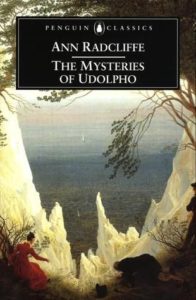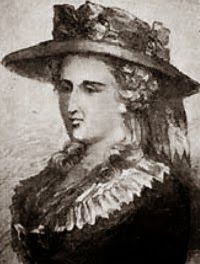Below is an article that is a novel summary and analysis of Ann Radcliffe’s novel – The Mysteries of Udolpho. It is an 18th-century novel written in the Georgian era and consists of four volumes.
The Mysteries of Udolpho

The novel was published in the year 1794. It is based on gothic literature and the scenes depict Gothic drama and scenarios of 18th century Europe. The novel is a thorough combination of drama, horror, and romance. It is based on 18th century France and Italy. The novel contains the countryside, the castles and the highlands of Europe.
Like many other gothic novels, it consists of a young and beautiful girl, a man she loves and a villain. This novel consists of encounters with the supernatural, mystery, suspense, romance and forces of nature. The novel paints a good picture of 18th century Europe and the type of people around – their lifestyle and cultures.
Analysis of The Mysteries of Udolpho

There is a high use of unrestricted imagination in the novel which decreases its sensibility in real life. However, the story ends with reasonability. The storyline favors reason over superstitions at the end of the novel. Hence, there is a mix of both ideas seen in the gothic novel.
There is also the use of the concept of temporality. Temporality is the progression of the past, present, and future. The novel is set during the time of the French Revolution which allows readers to connect with the past. There are some references that show that the atmosphere is set in the 1500’s – with regard to the castles and the gardens. Some references also denote the habits of the characters that come out to be very closely associated with the Georgian era.
In terms of gender, there have been many critics that have pointed out the male and female distinction in the novel in accordance with the era. During the time the novel was written there were many arguments in the European society with respect to gender equality. Hence, that mix of emotions can be clearly seen in the novel. For example, qualities of sensitivity and being emotional are not only been allotted to the female characters but also with respect to the male characters.
The same contrast in characteristics is seen in the villain that regards women as disposable property. The kind of love he has toward women is emasculating and controlling rather than compassionate and caring. Such contracts have been well studied and applied to increase the dramatic effect of the novel.
The novel is a fine example of utmost imaginative power, a wonderful insight into Georgian society, a positive and friendly yet dramatic portrayal of mystery, horror, and supernatural purely designed for entertainment. It is also a basis to understand the type of life in the Georgian era when the details are considered such as the lifestyle, culture, etc.
Some other notable works of Ann Radcliffe are ‘The Italian’ in 1791 and ‘The Castles of Athlin and Dunbayne’ in 1789.